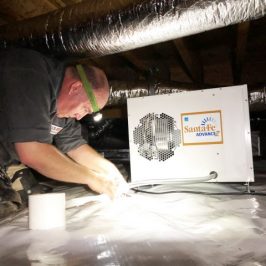FUNGI: The Quietest Demolition Crew
https://youtu.be/kzHQZG9A_Zc
Wood decay destroys more homes than damage from fires and termites combined. While wood-eating fungi may not be as noticeable (or creepy) as pests with legs, fungi can set up shop in the fundamental structures of your home. Left unchecked, it can whittle away your wood. It will also threaten the structural integrity of your home and crush its market value.
WE CAN HELP WITH FUNGI
Our fungus treatment professionals offer a complimentary inspection. We’ll identify any organisms that might already have taken root in your home. Additionally, we’ll assess your home’s general vulnerability to a future fungal invasion.
We specialize in applying Timbor, which forms a protective envelope around the wood of your home, keeping out fungus and eliminating several other harmful pests. Timbor has an active borate ingredient that’s odorless, and won’t discolor wood or damage building materials.
DETECTING THE FUNGUS AMONG US
Call us for an inspection to check out what’s going on in, around and under your home! Call: 615-590-1260. Visit: U.S. Pest | Follow us on Instagram @u.s.pest to stay up-to-date.

